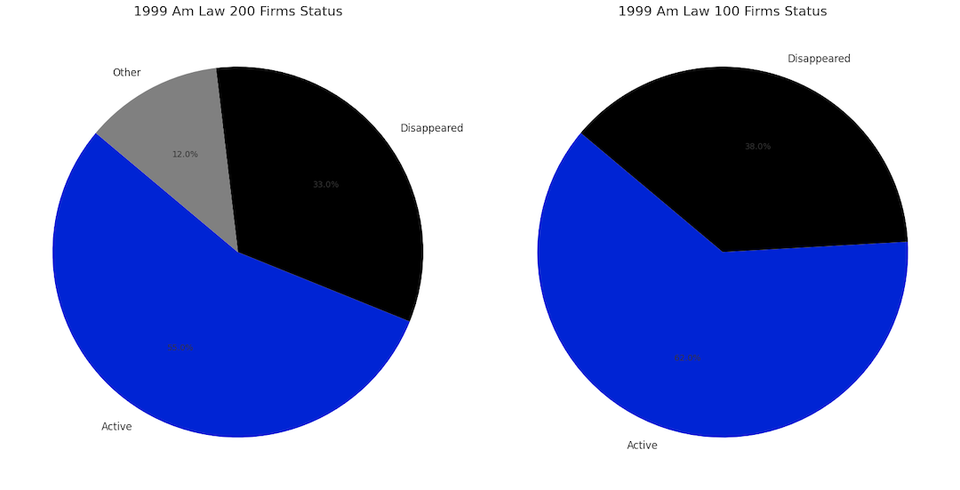In marking the silver jubilee of the Am Law 200, ALM's Law.com reported on a quarter-century of data, focusing on how an aggressive growth strategy has shaped the nation's largest law firms. Here's 10 takeaways from their investigation of that dataset.
-
Growth, Growth, Growth: Over the past 25 years, many of the largest 200 law firms in the U.S. have prioritized headcount growth, significantly impacting their financial health.
- Survival: Despite significant changes, 55% of the Am Law 200 firms from 1999 remain active under their original names, with an additional 8% still active under new names. However, 34% of the firms from 1999 have either merged or dissolved.
-
Consolidation: Forty-five firms from the 1999 Am Law 200 are now part of larger firms, contributing to the Am Law 100's increased share of headcount and revenue.
-
Headcount and Revenue Growth: From 1999 to 2024, the Am Law 100 firms more than doubled their headcount, while the second hundred grew more modestly. The Am Law 100's share of total revenue increased from 74% to 85%.
-
Inflation-Adjusted Growth: The Am Law 100 experienced higher compound annual growth rates (CAGR) for headcount, revenue per lawyer (RPL), and profits per equity partner (PEP) compared to the Am Law 101-200. However, signs of overcapacity are evident, as headcount growth outpaced revenue growth.
-
Profitability Challenges: While the Am Law 100's profits grew, firms outside the top 100 struggled to keep pace with inflation, affecting their profitability metrics.
-
Revenue vs. Profit: Gross revenue growth does not necessarily correlate with improved revenue per lawyer or profit per lawyer. The top firms in gross revenue growth often showed middling rankings in these per-lawyer profitability metrics.
-
Strategic Implications: Firms must balance revenue generation and fiscal discipline to achieve sustainable growth. Investing in technology and automation may offer competitive advantages, especially for repetitive, lower-risk tasks.
-
First-Mover Advantage: Law firms that can leverage first-mover advantages in technology and automation may gain sustainable competitive edges, particularly in higher frequency, lower-risk knowledge tasks.
With one-third of the 1999 Am Law 200 firms having disappeared or merged, the future will likely see similar shifts. Maintain strategic growth aligned with fiscal discipline and embracing innovation seem some of the key ingredients to building a firm that can not only rise but also stay at the top of the world's largest legal market.










